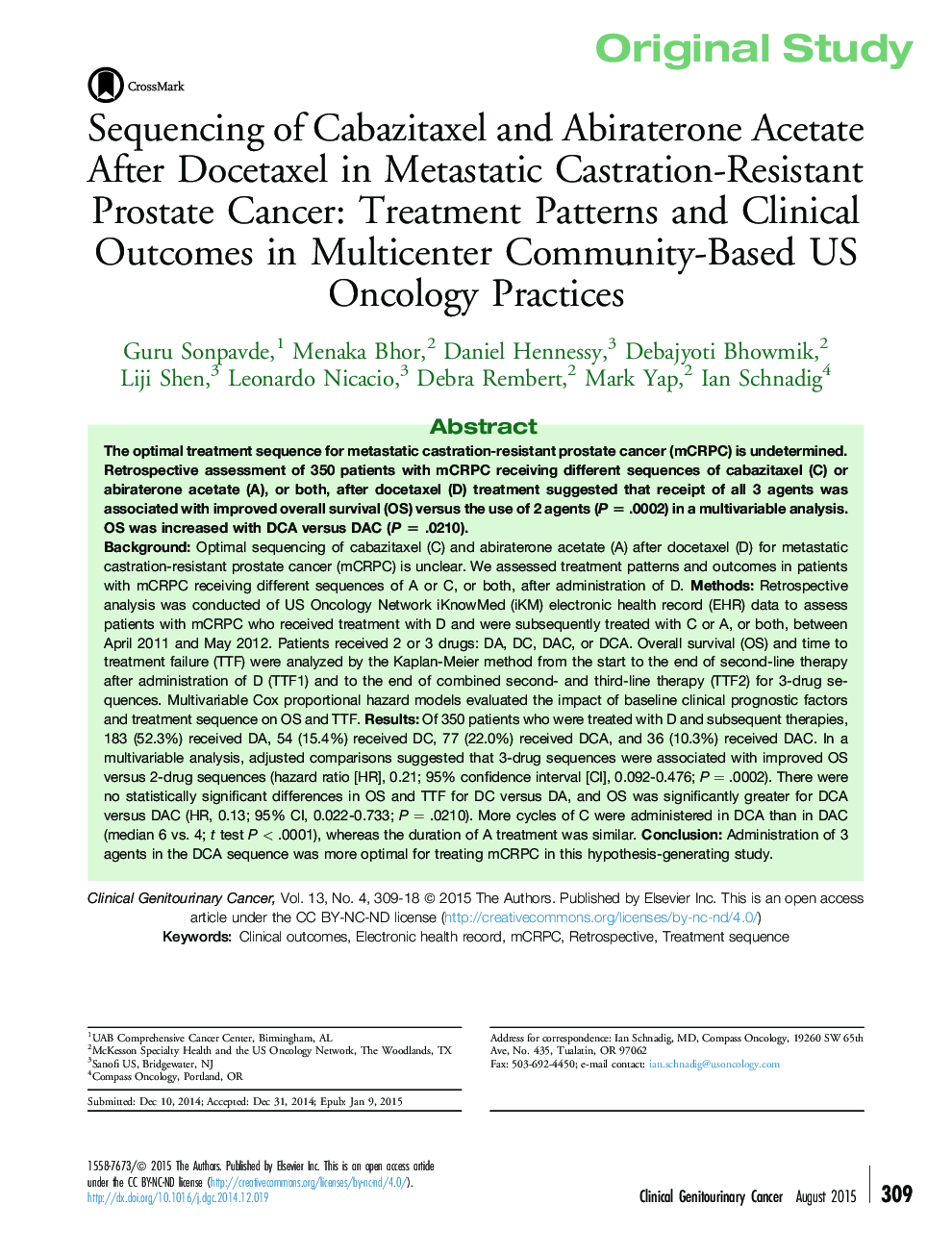| کد مقاله | کد نشریه | سال انتشار | مقاله انگلیسی | نسخه تمام متن |
|---|---|---|---|---|
| 5882318 | 1149539 | 2015 | 10 صفحه PDF | دانلود رایگان |

BackgroundOptimal sequencing of cabazitaxel (C) and abiraterone acetate (A) after docetaxel (D) for metastatic castration-resistant prostate cancer (mCRPC) is unclear. We assessed treatment patterns and outcomes in patients with mCRPC receiving different sequences of A or C, or both, after administration of D.MethodsRetrospective analysis was conducted of US Oncology Network iKnowMed (iKM) electronic health record (EHR) data to assess patients with mCRPC who received treatment with D and were subsequently treated with C or A, or both, between April 2011 and May 2012. Patients received 2 or 3 drugs: DA, DC, DAC, or DCA. Overall survival (OS) and time to treatment failure (TTF) were analyzed by the Kaplan-Meier method from the start to the end of second-line therapy after administration of D (TTF1) and to the end of combined second- and third-line therapy (TTF2) for 3-drug sequences. Multivariable Cox proportional hazard models evaluated the impact of baseline clinical prognostic factors and treatment sequence on OS and TTF.ResultsOf 350 patients who were treated with D and subsequent therapies, 183 (52.3%) received DA, 54 (15.4%) received DC, 77 (22.0%) received DCA, and 36 (10.3%) received DAC. In a multivariable analysis, adjusted comparisons suggested that 3-drug sequences were associated with improved OS versus 2-drug sequences (hazard ratio [HR], 0.21; 95% confidence interval [CI], 0.092-0.476; PÂ = .0002). There were no statistically significant differences in OS and TTF for DC versus DA, and OS was significantly greater for DCA versus DAC (HR, 0.13; 95% CI, 0.022-0.733; PÂ = .0210). More cycles of C were administered in DCA than in DAC (median 6 vs. 4; t test PÂ < .0001), whereas the duration of A treatment was similar.ConclusionAdministration of 3 agents in the DCA sequence was more optimal for treating mCRPC in this hypothesis-generating study.
Journal: Clinical Genitourinary Cancer - Volume 13, Issue 4, August 2015, Pages 309-318